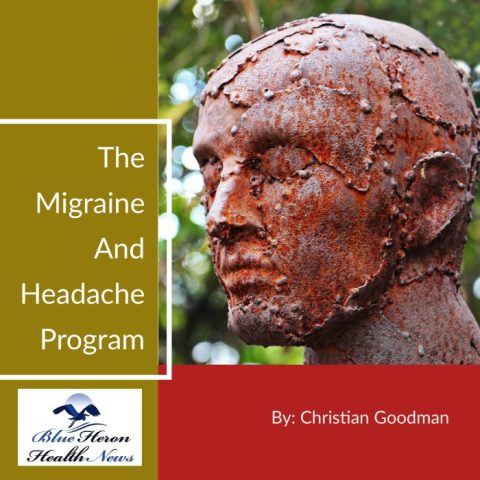How To Get Rid of A Migraine Quickly: Complete Guide 2024
By Vanessa Richards
January 10, 2024 • Fact checked by Dumb Little Man

You get home from a stressful day and you start feeling that familiar throbbing between your eyes. You rush to your medicine cabinet hoping you can stop this headache before it becomes a full-blown migraine pain.
Migraines are debilitating conditions that can be caused by a wide range of triggers. It can also appear in a variety of different ways besides simple headache pain.
There are several ways of dealing with headache symptoms ranging from medications to supplements and natural remedies. Most people find migraine relief from a combination of these different methods.
Let’s take a look at some common triggers of a migraine attack and how to avoid them. We’ll also break down different types of migraine attack remedies.
How To Get Rid of A Migraine: What is a Migraine?

A migraine attack is a particularly strong type of headache that commonly occurs on one side of the head and is usually accompanied by a wide range of symptoms. This could range from strange flashes of light to nausea, and vomiting. Migraine symptoms usually last for minutes to hours, but sometimes could last for even days.
One common feature of migraines that differentiates them from tension headaches or cluster headaches is that they are usually triggered by a wide range of stimuli like bright lights, loud noises, stress, lack of sleep, and even certain foods. People who suffer from migraines usually have specific triggers which they learn to identify over time, though these may change over time.
It is estimated that 12% of people will suffer from a migraine at some point in their life. Migraines also tend to have a strong familial link and are three times more common among women than men.
The frequency of these attacks can vary widely, but most people have two to four episodes a month. Migraines are a very debilitating condition and can cause significant distress as well as impair the quality of life of the individual.
What Causes a Migraine?
While the triggers of migraines are well-known and relatively easy to identify, the primary causes of the condition are relatively obscure. However, there are a few suggested causes of migraines such as changes in blood vessels within the brain, brain cell overactivity, genetics, inflammation of the brain, and so on.
Common Migraine Triggers
Even though the root cause of headaches is not well-known, some common triggers are usually easy to identify. These triggers may vary widely, but they are usually consistent in the same individual. For example, some people are more sensitive to light while others may notice that their migraines are usually stress-induced.
Here are some common triggers of migraines:
- Glaring lights such as bright sunlight, headlamps, or stage lights
- Loud noises
- Strong smells
- Hormonal changes are a frequent migraine trigger. This probably explains why migraines are more common in women, especially during pregnancy, ovulation, menopause, as a symptom of premenstrual syndrome, and when using birth control or hormone replacement therapy.
- Stress is a well-known trigger. This may be due to the changes in brain chemistry or blood flow when you are stressed.
- Certain foods such as alcohol, aged cheese, chocolate, citrus fruits, and even food additives have been linked to migraines. Nitrates and monosodium glutamate (MSG) have been found to trigger migraines in some people.
- Skipping meals or low blood sugar can trigger migraine attacks.
- Certain medications such as blood pressure drugs and even migraine medications (also called an Excedrin migraine or a medication overuse headache) are known to trigger attacks.
- Smoking
- Taking too much caffeine or caffeine withdrawal headaches
- Sleeping too much or too little
- Teeth grinding and excessive chewing
How To Spot Migraine Symptoms
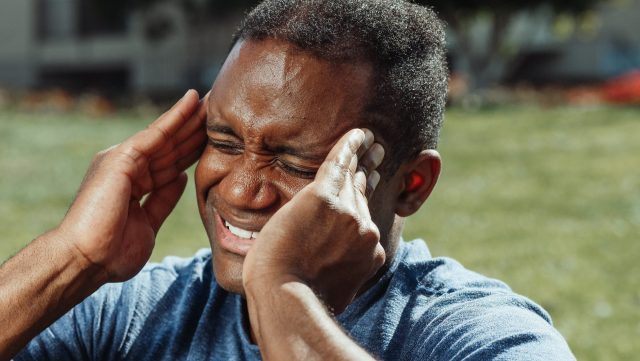
Certain features of migraines usually set them apart from other headaches. One important feature is the fact that most people have particular triggers which they learn to identify over time. Another important feature is that migraines have certain warning signs usually referred to as “auras” or “prodromes” which commonly occur before the actual headache.
Therefore, a migraine can be generally divided into four stages. The prodrome, the aura, the attack, and the postdrome. The first two stages occur before the attack, while the last one occurs after the episode of headaches. Identifying the prodrome and aura stage is essential to spot migraines on time and potentially prevent them from occurring. Let’s take a look at some of the key features of each of these stages.
The Prodrome Stage
The prodrome is usually the first stage of the migraine. It is also called the “pre-headache” or “premonitory” stage. The prodrome can last for hours to days before the actual migraine. Some common features of the prodrome stage include increased sensitivity to light, tiredness, mood swings, thirst, strange cravings, a loss of appetite, bloating, constipation, or diarrhea.
Due to the wide range of symptoms associated with the prodrome stage, it can be difficult to recognize initially. Also, these symptoms may be so mild or ubiquitous that at times they can be easily missed or dismissed. However, most people with migraines learn to identify these features early on.
The Aura Stage
This usually occurs within an hour of the migraine headache, usually about 5 to 20 minutes before the onset of the headache. However, sometimes the migraine aura and migraine headache may occur at the same time or there may be no aura at all. These symptoms are usually more specific and typically involve the senses. They include:
- flashes of light
- black dots
- tunnel vision
- temporary loss of vision
- tingling or numbness
- ringing in your ears
- heaviness in your arms or legs
- speech difficulties
- strange smells, tastes, and so on.
The Headache Stage
This is the actual migraine episode and usually starts as a dual ache on one side of the head. It later changes to a throbbing ache which can be on one part of the head, both sides, or the entire head. Sometimes the pain can be described as drilling or sharp.
Migraine attacks are usually associated with nausea and sometimes even vomiting. The migraine symptoms may also include features of the aura stage such as flashes of light or weird sensations. These symptoms usually last for a few minutes to hours but may last for as long as 4 hours to 72 hours.
The Postdrome stage
This occurs after the migraine headache and usually lasts for one to two days. It is also called a migraine hangover and involves symptoms like fatigue, difficulty concentrating, depression, and even anxiety.
How To Get Rid of Migraine Pain
Migraine symptoms are certainly terrible and can be debilitating at times. There are several remedies for managing migraines ranging from natural remedies to medications and even supplements. Let’s take a look at some great ways of dealing with migraine headaches.
Natural Remedies
Natural remedies are better for preventing migraine attacks, though they may be able to reduce the severity of migraine episodes as well. Here are some natural tips and strategies you can use to manage severe headaches.
Avoid Triggers of Headache Pain
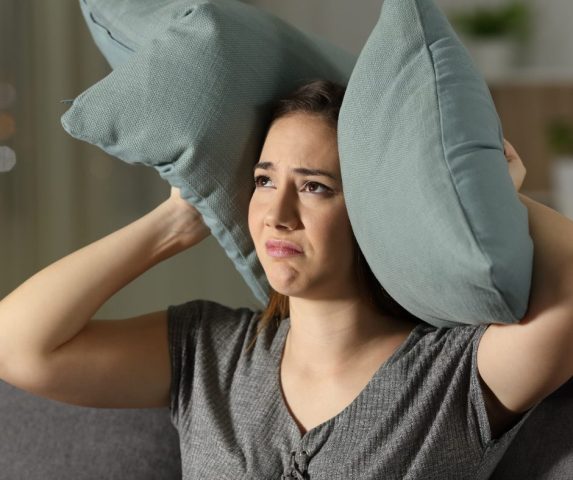
Many people who suffer from migraines can identify certain triggers such as bright lights, loud noises, stress, teeth grinding, certain foods, and so on. This might not be able to eliminate migraine attacks, but it goes a long way in reducing the frequency of attacks and severity of episodes.
Try Stress-relieving Techniques

Just like other common types of headaches like cluster headaches and tension headaches, stress is a common cause of migraines. Various medically reviewed studies have found that activities that help relieve stress may reduce headache pain. This includes things like yoga, meditation, massages, acupuncture, acupressure, and other stress management techniques.
Avoid Overstimulation During Attacks

During migraine episodes, it’s a good idea to find a quiet, dark room to lay down. This helps reduce the severity of the migraine.
Try Cold Compresses & Stay Hydrated

Some people have found that cold compresses applied to the back of the neck during or before a migraine episode can help prevent the attack or at least reduce the severity.
Also, up to one-third of people who suffer from chronic daily headaches and migraines state dehydration as one of their regular triggers. Therefore, staying hydrated is a great way to prevent migraines.
Have a Well-regulated Sleep Pattern
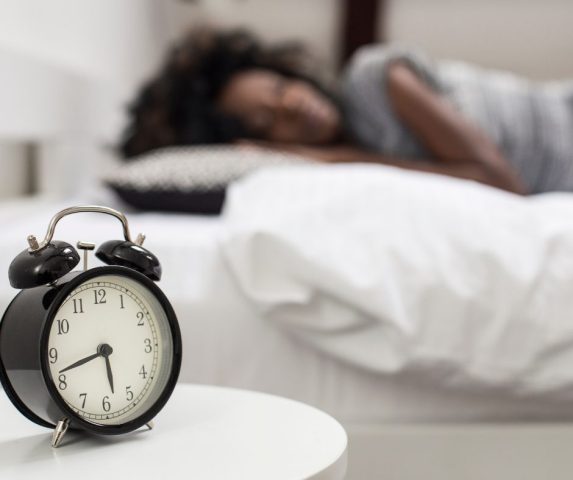
Sleeping too much or too little is another well-documented cause of migraines. Having healthy sleeping habits is very important. This includes sleeping at least six to eight hours a night, sleeping around the same time every night, and spending at least an hour away from electronic screens before going to bed.
Try Using Aromatic Essential Oils

Aromatherapy has long been used as a natural remedy for severe headaches like migraines. Essential oils like peppermint and lavender are especially helpful for dealing with migraines. Dilute these oils in carrier oils and massage them over the areas of pain or gently inhale the diluted solutions of these oils.
Acupuncture

Acupuncture can relieve a variety of headaches. However, a professional should perform the traditional Chinese method. Scientific sources state that you might experience a numbing sensation. Additionally, the majority of people need more than one session.
What is the best aspect of it? It is organic and doesn’t have any negative effects
>>Related Article: Chiropractic Therapy for Headaches Following a Car Accident
Medications
Here are a few FDA-approved treatments for migraine headaches.
Painkillers
Various over-the-counter and prescription painkillers are available for acute migraine treatment. These include acetaminophen, and nonsteroidal anti-inflammatory drugs (NSAIDs) like ibuprofen, aspirin, or naproxen. These drugs are sometimes given as combinations or combined with caffeine as it has been found that small doses of caffeine may help with severe headache pain.
Triptans
Triptans are a special class of drugs that are commonly used to relieve migraine pain. They affect the levels of certain important neurotransmitters and affect blood vessels within the brain. Some examples include sumatriptan, zolmitriptan, and naratriptan.
Others
Some other important medical treatments are used in treating severe migraine pain as well. They include:
- calcitonin gene-related (CGRP) monoclonal antibodies ( for example erenumab, fremanezumab, eptinezumab)
- beta-blockers (atenolol, nadolol, propranolol)
- antidepressant medications (amitriptyline, nortriptyline, venlafaxine, duloxetine)
- anti-seizure medications (valproic acid, topiramate)
- steroids
- phenothiazines
Supplements
Certain supplements have been found to reduce the incidence and severity of a migraine attack. It’s important to remember that some of these supplements are not FDA-approved for migraine relief. They include various B vitamins, magnesium supplements, coenzyme Q, feverfew, and so on.
1. Best Supplement To Restore and Repair Neurological Health: Magnesium Breakthrough
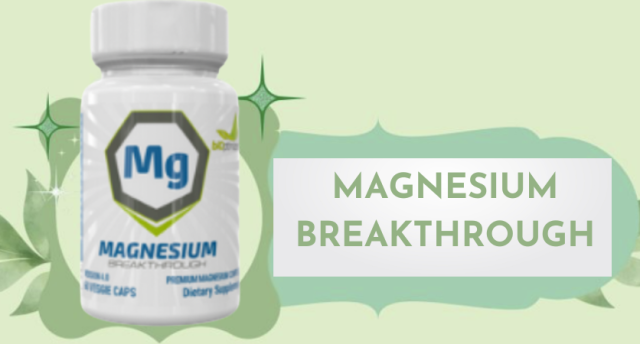
Magnesium Breakthrough is a full formula made up of seven essential magnesium kinds. It supports better health and nervous system restoration.
The manufacturer claims that magnesium supplements kill chronic stress and may correct nutritional deficits that cause health issues. Additionally, the producer asserts that this supplement can address the root of stress. Additionally, it aids in stress relief and regulates the body’s hundreds of biochemical processes.
One of the key ingredients of the supplement is Magnesium Malate. This is known to be seen in fruits and helps in relieving chronic pain, depression, and migraines.
Shop Magnesium Breakthrough Supplement at the Official Website.
Full Article: Magnesium Breakthrough Reviews: Does it Really Work?
2. Multi-Focused Liquid Magnesium Supplement: Upgraded Magnesium Nano Liquid
The Upgraded Magnesium Nano liquid has a balanced mineral ratio that is better replenished and highly absorbed by the body. These minerals lengthen your life expectancy, improve your sleep, help you concentrate, slow down rapid aging, and enable you to lead a healthy lifestyle.
Many people benefit from the improved formula and live long healthy lives. It efficiently combats health issues while enhancing sleep, memory, muscle pain, and cardiovascular wellness.
Shop Magnesium Upgraded Drops at the Official Website.
Full Article: Upgraded Magnesium Nano Liquid Reviews 2024: Does it Really Work?
Digital Program
1. Holistic Program For Permanent Cure: The Migraine And Headache Program
The Migraine and Headache Program is a digital resource created by Christian Goodman which uses a revolutionary combination of relaxation techniques, dietary modifications, and stress management strategies to help you reduce the frequency and severity of your headaches.
While most medications aim at terminating headaches once they have started, this technique tries to prevent migraine headaches by addressing the root causes and triggers of episodes. It is also aimed at helping people understand migraines and how they occur, to better help them deal with the condition.
There are several advantages to this program. First of all, it involves a one-time payment of only $49, which is quite cost-effective when compared to the hundreds of dollars spent on doctors’ appointments and migraine medication, not to mention the working hours lost. It also works for people who struggle with both acute and chronic migraine attacks.
The Migraine and Headache Program is also great for dealing with other common types of headaches like cluster headaches, tension headaches, and so on. It doesn’t involve the use of medications, so there are no side effects. Also, the program is safe and effective for virtually everyone.
Let’s take a look at some of the components of the program.
Lifestyle Modifications
The program promotes various natural lifestyle modifications such as avoiding potential triggers, creating a healthy sleep schedule, keeping a detailed migraine diary, and so on. These tips are quite easy to follow, which makes the progress much easier to stick to.
Breathing Exercises
In the course, you will be taught several forms of breathing exercises that are aimed at increasing the oxygen content of the blood and relaxing the body. This includes body balance exercises which are aimed at freeing up the diaphragm and simply breathing exercises for stress relief.
Head and Neck Exercises
These include exercises that help strengthen and relax key muscles in the head and neck which are associated with migraines.
Stress-relieving Techniques
The program promotes the use of various stress-relieving activities such as acupuncture, acupressure, meditation, and so on. This is because stress is a common trigger for migraines in a lot of people.
Other Secret Techniques
There are other techniques offered by the program which we can’t list here and which can only be accessed through the course.
Shop The Migraine And Headache Program at the Official Website.
Full Article: The Migraine And Headache Program Reviews 2024: Does it Really Work?
Conclusion
Migraines are a terrible form of severe headaches and affect millions of people all over the world. They have a range of symptoms and can be triggered by a wide range of causes.
There are many natural and pharmaceutical treatments for migraine headaches. That’s why we recommend the Migraine and Headache Program, a comprehensive treatment system created by Christian Goodman, an expert in the field of headache and migraine management.
It uses a combination of relaxation techniques, dietary modifications, and stress management strategies that help in reducing migraine pain and the frequency of attacks. The program is safe, effective, and 100% natural.
It is great at addressing the root causes of migraines, thereby preventing attacks. The program includes a range of lifestyle modifications, breathing exercises, head and neck exercises, stress-relieving techniques, and much more.
These techniques are very effective, they have tons of positive reviews, and they work for virtually everyone.
Click Here to Know More About The Migraine And Headache Program.
>> Related Article: Headache Remedies: What to Do to Overcome Headaches Anytime, Anywhere
How To Get Rid of A Migraine FAQs
How long does it take to recover from a migraine?
Most people require one or two days to fully recover from a migraine, especially severe attacks. This is commonly referred to as a migraine hangover.
How frequently do migraine attacks occur?
This can vary widely from once a year to even once a week. However, two to four attacks a month is what most people who suffer from migraines experience.
Is it possible to stop a migraine once you’ve noticed the warning signs?
While it may not always work, it is possible to stop a migraine once it has started or at least prevent it from becoming more severe.
Vanessa Richards
Vanessa is a mom of 3 lovely children and a software geek. Outside of her career as a health and wellness instructor. She enjoys writing and researching on topics such as finance, software, health and culinary.



